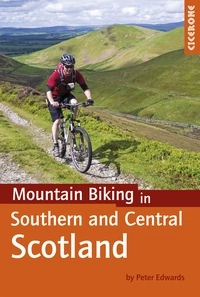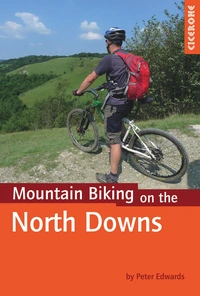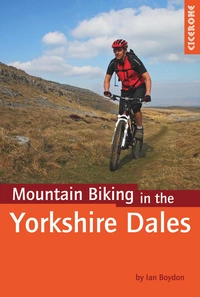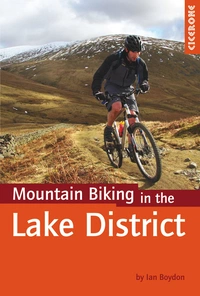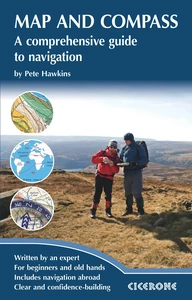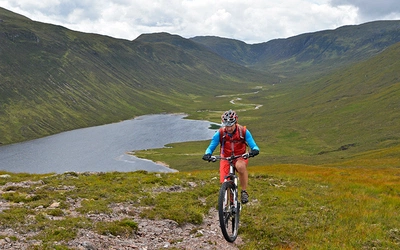Top tips for mountain biking safety
Most of the time, mountain biking is a perfectly safe activity and far safer than cycling on roads. However, rutted, slippery and loose surfaces are frequently encountered and if you take a tumble at speed, you risk causing yourself considerable damage. Expert Peter Edwards gives us some top tips for mountain biking safety.

Cycling downhill at speed is one of the great joys of mountain biking, but it’s essential that you maintain control. If you can’t see what (or who) is coming round a bend, slow down. Likewise, if you’ve never ridden a particular downhill before and don’t know what to anticipate, moderate your speed.
Make sure that your brakes are working efficiently and that your tyres are inflated properly (30–40psi depending on terrain, conditions, your weight and so on). Under-inflated tyres are more vulnerable to ‘pinch’ punctures. Check that all quick release levers are tight and wheels are secure.
Wear a helmet and appropriate clothing, and carry a first-aid kit, plenty of water, some high-energy snacks, a map and compass or GPS as well as a mobile phone, and wear some sun block in summer. Carry waterproofs in wet weather. Carry spare inner tubes, puncture repair kit, a pump and basic tool kit. Carry lights if there’s any chance you’ll be returning after dusk (equipment is covered in more detail below). If you go riding on your own, let someone know where you’re going and when you expect to return. In the event of a serious accident requiring urgent assistance, dial 999 and ask for the police or ambulance. Be ready to give a map grid reference.
Equipment
How much to spend on a mountain bike
Out on the hills you’ll encounter mountain bikers riding machines costing between a few hundred pounds and a few thousand. Your choice of bike is contingent on a number of factors, but is generally the sum of disposable income divided by degree of enthusiasm. There’s no doubt that a top-of-the-range, lightweight bike with high-specification components can only add to the enjoyment of off-road cycling. However, there’s little point spending thousands on a bike that only sees action a few times a year. For those who are serious about their sport a good quality machine is essential, but choosing the right type of mountain bike for you is a far more important business than the relative cost alone, and it’s best to seek advice from reputable bike retailers before buying.
Choosing the right frame size is a crucial factor, bearing in mind that a smaller frame than you would need for a road bike is better suited for off-road riding. An increasing number of mountain bikers ride full-suspension bikes, which take the edge off the bone-jarring sensations experienced on rougher terrain; a smoother ride also means greater control, especially on downhills and ‘technical’ terrain. Many of the trails encountered at trail centres are as appropriate terrain for full-suspension bikes as anywhere, although many people still prefer to ride ‘hardtail’ machines – that is, front suspension only – which are lighter and faster uphill. This is a matter of personal preference, dictated in part by the kind of riding you do.
Wear a helmet
The vast majority of mountain bikers wear a helmet with very good reason. The nature of the activity means that taking a tumble is a likelihood at some point. If this happens when you’re travelling downhill at speed, you’re at risk of serious injury. As well as injuries such as broken bones and serious gashes, a head injury can be fatal or cause permanent disability or paralysis. A helmet may not prevent such serious injuries in some cases, but in others it might.
Maybe wear body armour
Some trail centres are popular venues for downhilling and freeriding – highly technical riding that involves negotiating jumps and various obstacles (both natural and those made by ‘trail builders’), preferably at high speed. Unsurprisingly, enthusiasts often wear full-face helmets, neck braces and body armour – with good reason.
Taking mountain biking safety too far? Body armour is cumbersome and unnecessary for the less death-defying activity of cross-country (or XC, as some style it) mountain biking, but if you like to take on a few jumps here and there, then shin, knee and elbow pads are a consideration.
Mountain biking in Scotland is beautiful, varied and adventurous
Take a first aid kit
Taking a tumble at speed in rocky or wooded terrain can result in broken bones or nasty gashes – all the more reason to wear a helmet. However, anecdotal evidence suggests that many mountain bikers don’t carry a first aid kit with them. If you break a collarbone – a not uncommon injury among mountain bikers – a triangular bandage can be used to make a sling. Wound dressings, plasters, antiseptic wipes, latex gloves and painkillers can also be very useful.
Wear gloves
These improve grip on your handlebars, keep your hands warm in winter and provide protection when you fall off – which is inevitable on occasion.
Look after your eyes
Many riders wear sunglasses to reduce glare on bright days, but also as protection from mud, debris and flying insects – especially on fast descents. There are many bike-specific sunglasses on the market, some of which have interchangeable lenses with different colours for different light conditions. Downhillers and freeriders sometimes wear ski goggles.
Wear the right clothing - no long scarves
Not so much mountain biking safety as comfort and even style! There is no shortage of biking-specific clothing on the market, and specialised off-road gear comprises a significant part of this. With the funds and inclination, many hundreds of pounds can be spent on equipping yourself for mountain biking, and for dedicated enthusiasts it may constitute money well spent. However, there are some essentials worth considering even for infrequent mountain bikers. Wickable base layers, underwear, mid-layers and top layers can make what is often a sweaty activity much more comfortable. Stopping for a breather in a sweat-drenched cotton top is asking for trouble even in a light breeze. Shorts or wickable undershorts with a padded seat ensure a more comfortable relationship with your saddle, especially on longer rides.
Biking-specific waterproofs are designed for a close fit and freedom of movement so as to avoid drag or getting caught up in your bike’s moving parts. Waterproofs should be a ‘breathable’ material, such as Gore-Tex.
Many mountain bikers use the SPD pedal system with shoes that clip onto the pedal using cleats, which provides greater stability and makes pedalling more efficient by engaging the ‘backstroke’. Whether using SPDs, ‘platform’ pedals or other systems, waterproof overshoes and/or waterproof socks can be useful in wet conditions.

Tools and maintenance
Whatever choices you make about the type of bike you ride, the more use it gets the more maintenance it will require. However expensive or inexpensive your bike, it needs to be looked after. Off-road riding can take it out of a bike, especially in wet and muddy conditions. It’s important to keep your bike at least reasonably clean and keep its moving parts lubricated. A well-maintained bike performs better and its components will last longer.
In dry periods during the summer months some paths and tracks can develop a layer of fine dust, which combined with ordinary chain oil produces a highly effective grinding paste that will punish your bike’s drive-train. Using a ‘dry’ teflon chain lubricant reduces this phenomenon.
Learn the basics of bicycle maintenance and take some tools
You should carry a small tool kit and pump with you while out riding and, at the very least, be able to repair a puncture, fix a broken chain and adjust your brakes and gears when necessary. A basic tool kit – including puncture repair kit, spare inner tubes, tyre levers, allen key set, spoke key and chain link extractor – can be carried in a saddle pack or back pack.
Don't get lost
Many walkers and cyclists now use GPS for navigation, and there are a number of biking-specific GPS systems on the market. GPS systems can make navigation easy and accurate. On the down side, they’re not cheap and they’re not infallible. For those without a GPS, a map and compass are just as useful for mountain bikers in unfamiliar territory as they are for walkers, although very few of the former seem to carry compasses. For many mountain biking routes – outside of trail centres – there is little or no waymarking and it can be very easy to lose your way, especially in wooded areas. A compass can help prevent you heading miles off course.
Keep hydrated
Always make sure you have plenty of water with you, especially during the summer and on longer rides. Many mountain bikers use hydration packs – a water reservoir with a drinking tube, usually with two or three litres capacity, carried in a purpose-designed, small backpack. Hydration packs allow you to carry more water than water bottles carried in frame-mounted bottle cages – which are more popular with road cyclists – that can easily be dislodged when riding off-road. Be sure to be adequately hydrated before setting off on your ride.
MTB-specific back packs, which are designed to carry water reservoirs, come in various capacities and are usually able to carry the essentials in internal pockets: tools, pump, waterproofs, snacks, mobile phone, first-aid kit, map etc. They are also designed for a comfortable and stable fit for cycling. If you’re thinking about acquiring one, consider how much capacity you’ll need for the kind of riding you do.
Eat enough... and don't fall on your bananas
Carry enough food and/or make certain you can buy some food en route. If your energy levels dip when cycling it’s difficult to maintain output on an empty tank. When walking, hunger can be ignored to a certain extent, but cyclists are prey to the phenomenon of gnawing pangs that won’t go away, which is known in some parts as ‘bonking’.
It makes sense to carry lightweight, high-energy foods such as flapjack, trail mix, ‘hi-energy’ bars and bananas – but try not to take a tumble if carrying the latter.
— Peter Edwards
More Information
Peter Edwards is the author of a number of Cicerone guides including Mountain Biking in Southern and Central Scotland. This blog on mountain biking safety is an extract from this title.
The companion guide to Peter's book is Sean Benz's Mountain Biking in West and North West Scotland.



